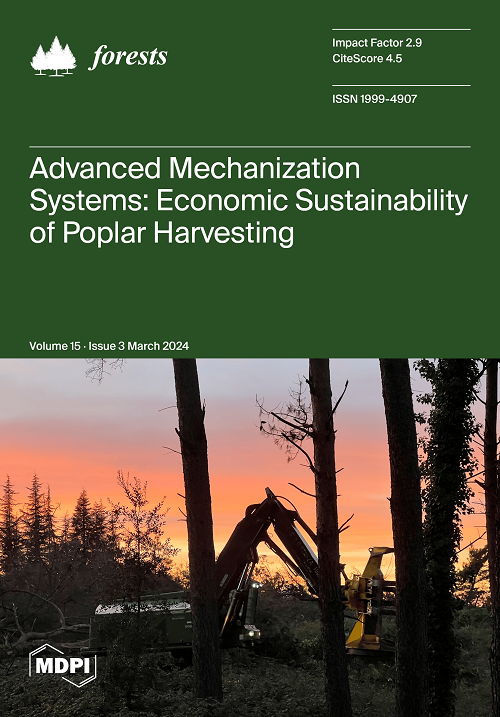基于深度学习算法的青藏高原常差植被指数模拟与驱动分析
IF 2.5
2区 农林科学
Q1 FORESTRY
引用次数: 0
摘要
全球气候变暖对陆地生态系统产生了深远影响。青藏高原(TP)是一个生态脆弱的地区,是研究植被对气候变化响应机制的理想场所。在这项研究中,我们基于 2000 年至 2021 年的 MOD13A1 产品,构建了分辨率为 500 米的年度合成 NDVI 数据集,该数据集由谷歌地球引擎(GEE)提取并经卡尔曼滤波器处理。此外,考虑到地形和气候因素,还进行了深入分析,以确定 NDVI 时空变化的原因及其对 TP 的影响。主要研究结果如下(1) 在过去的 22 年中,大埔的植被覆盖率以 0.0134/10a 的速度缓慢增长,由于地形和气候条件的影响,植被覆盖率的异质性非常明显。(2) 在研究期间,大埔总体上呈现出 "增温增湿 "的趋势。人类活动对植被生长的影响呈现出良好的轨迹,自 2011 年以来明显加速。(3) 影响大洋洲保护区东南部和西部地区植被归一化差异植被指数的主要因素是气温的升高。相反,东北部和中部地区的植被主要受降水调节。(4)结合主成分分析,PCA-CNN-LSTM(PCL)模型在青藏高原 NDVI 序列建模中表现出明显的优越性。了解本文的研究结果对于青藏高原的可持续发展和生态政策的制定具有重要意义。本文章由计算机程序翻译,如有差异,请以英文原文为准。
Normal Difference Vegetation Index Simulation and Driving Analysis of the Tibetan Plateau Based on Deep Learning Algorithms
Global climate warming has profoundly affected terrestrial ecosystems. The Tibetan Plateau (TP) is an ecologically vulnerable region that emerged as an ideal place for investigating the mechanisms of vegetation response to climate change. In this study, we constructed an annual synthetic NDVI dataset with 500 m resolution based on MOD13A1 products from 2000 to 2021, which were extracted by the Google Earth Engine (GEE) and processed by the Kalman filter. Furthermore, considering topographic and climatic factors, a thorough analysis was conducted to ascertain the causes and effects of the NDVI’s spatiotemporal variations on the TP. The main findings are: (1) The vegetation coverage on the TP has been growing slowly over the past 22 years at a rate of 0.0134/10a, with a notable heterogeneity due to its topography and climate conditions. (2) During the study period, the TP generally showed a “warming and humidification” trend. The influence of human activities on vegetation growth has exhibited a favorable trajectory, with a notable acceleration observed since 2011. (3) The primary factor influencing NDVI in the southeastern and western regions of the TP was the increasing temperature. Conversely, vegetation in the northeastern and central regions was mostly regulated by precipitation. (4) Combined with the principal component analysis, a PCA-CNN-LSTM (PCL) model demonstrated significant superiority in modeling NDVI sequences on the Tibetan Plateau. Understanding the results of this paper is important for the sustainable development and the formulation of ecological policies on the Tibetan Plateau.
求助全文
通过发布文献求助,成功后即可免费获取论文全文。
去求助
来源期刊

Forests
FORESTRY-
CiteScore
4.40
自引率
17.20%
发文量
1823
审稿时长
19.02 days
期刊介绍:
Forests (ISSN 1999-4907) is an international and cross-disciplinary scholarly journal of forestry and forest ecology. It publishes research papers, short communications and review papers. There is no restriction on the length of the papers. Our aim is to encourage scientists to publish their experimental and theoretical research in as much detail as possible. Full experimental and/or methodical details must be provided for research articles.
 求助内容:
求助内容: 应助结果提醒方式:
应助结果提醒方式:


